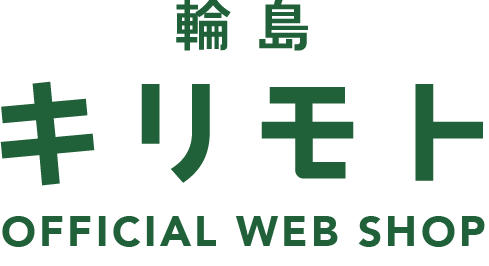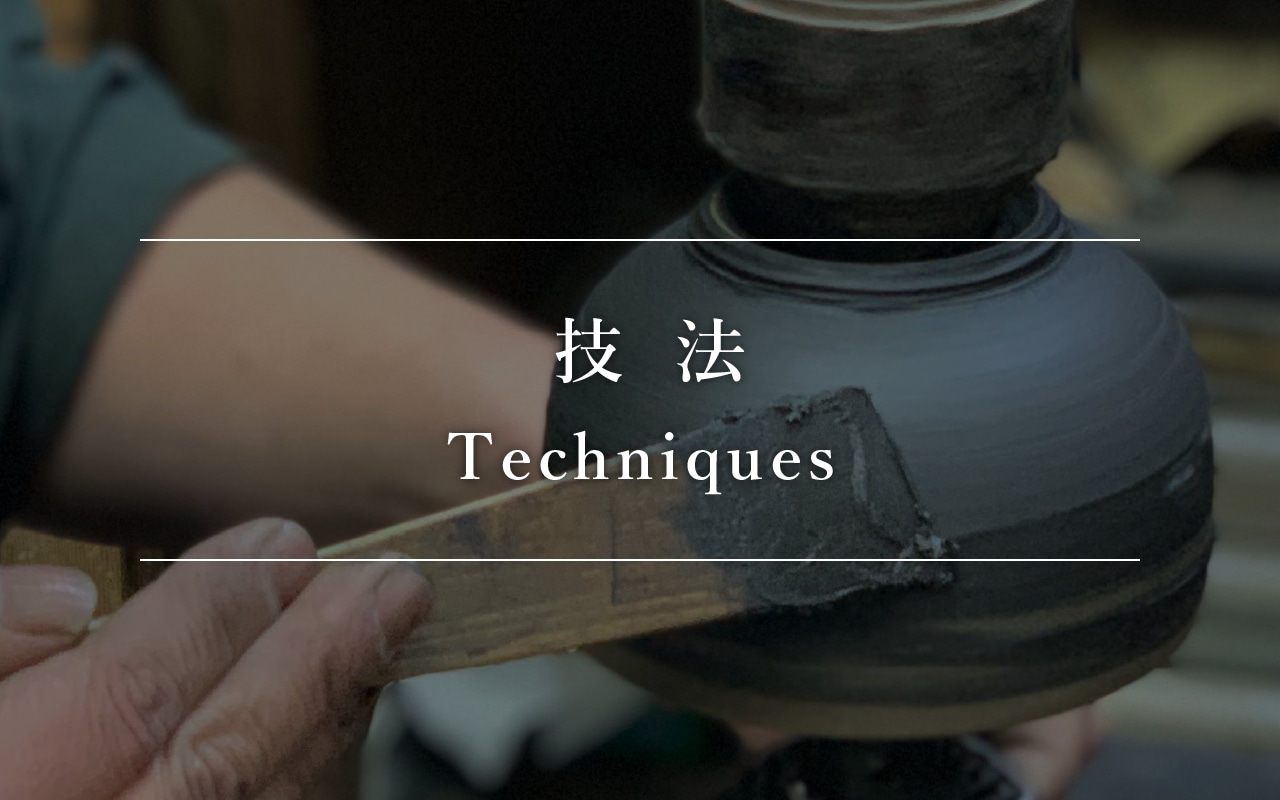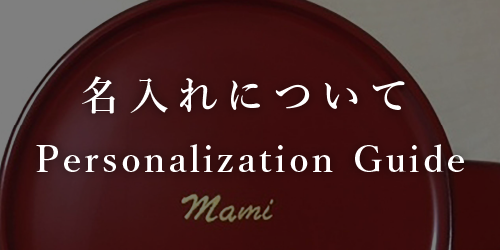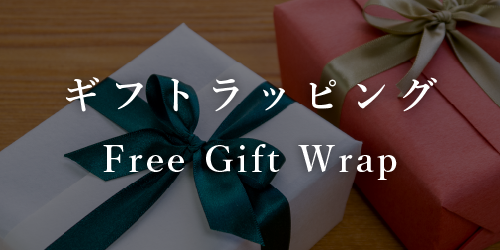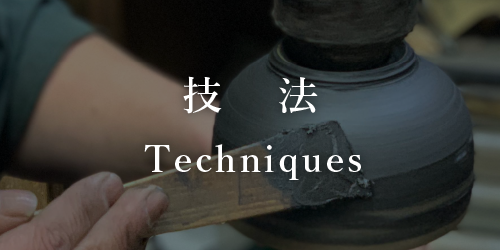2021/06/21 00:00
本堅地技法(ほんかたじぎほう)The HONKATAJI Technique

漆ならではのふっくらとした質感と艶やかな表情が美しい仕上げ。
数ある漆塗り技法の中で、輪島塗産地が採用しているのが本堅地技法です。
天然木を用いて、上縁、高台の縁、箱の回り、家具の表面など、欠けやすい部分に漆布着せを行い、「輪島地の粉(※)」を用いた下地を施し、研ぎ、中塗、上塗りを経て作られます。完成した塗装の断面をみてみると、9層からにもなり、長く使って表面に痛みが出てきても「直すこと」ができます。
※ 輪島市内の小峰山から産出される珪藻土を焼成し粉末にしたもの
Of all the different Techniques of applying lacquer, the one used in Wajima is the honkataji Technique.
Lacquer cloth is applied to natural wood on the parts of the piece that are easily damaged, such as edges, base footings, the outside of boxes, or furniture tops. Then, diatomaceous earth collected from Mt. Komine in Wajima City that has been fired and made into a powder called Wajima jinoko is applied as a base coat, then it is polished, given a mid-coat, then a top coat. A cross section of a finished product would show nine layers in total. Even if the product is used for many years and the surface becomes damaged, it’s possible to be repaired.
本堅地技法のモノを使っていくと... If You Use Urushi Lacquer Ware of HONKATAJI
「使って/洗って/拭いて」いくことで、自然と艶が増し、色も明るくなっていきます。鋭利な物や硬い物に当たると、傷や欠け、割れが生じる場合があります。
By "using / washing / wiping off", the gloss will naturally increase and the color will become brighter. If it hits sharp or hard objects, it may be scratched, chipped or cracked and damaged the coating.

新品(左)と約5年使用した器(右)New (left) and the vessel used for about 5 years (right)
蒔地技法(まきじぎほう)WAJIMA KIRIMOTO'S MAKIJI Technique

金属のスプーンなどを使っても傷がつきにくく、マットな質感が特徴の蒔地仕上げ。
これまでにあった下地の蒔地技法を応用した輪島キリモト独自の技法です。天然木に「漆布着せ(※)」を行い、下地を施した後、表面に近い部分でもう一度「輪島地の粉」を使用し、漆を塗り重ねて仕上げています。表面に痛みが出てきても「直すこと」ができ、毎日の生活の中で気兼ねなく使うことができます。
これまでにあった下地の蒔地技法を応用した輪島キリモト独自の技法です。天然木に「漆布着せ(※)」を行い、下地を施した後、表面に近い部分でもう一度「輪島地の粉」を使用し、漆を塗り重ねて仕上げています。表面に痛みが出てきても「直すこと」ができ、毎日の生活の中で気兼ねなく使うことができます。
※ 箸、スプーン、ペン/カードトレーには布着せは行っておりません。
Kirimoto took the makiji technique and successfully adapted it so that it creates a surface so tough that even a metal spoon used on the item will not damage it. Lacquer cloth is applied to natural wood, and the Wajima jinoko that is used in the base coat is applied once again close to the surface. This technique is recognized by the Small and Medium Enterprise Agency as a “Manufacturing Program using Local Materials” and in 2007 it was chosen as part of the “Japanesque Modern Collection”.
蒔地技法のモノを使っていくと... If You Use Urushi Lacquer Ware of MAKIJI
蒔地ならではのザラザラとした表面は少しずつ滑らかになり、全体的に艶が増し、色も明るくなっていきます。鋭利な物や硬い物に当たると、欠けや割れが生じる場合があります。
The rough surface unique to Makiji gradually becomes smoother. The more you use it, the more it gains luster and it becomes brighter. You can enjoy this change of expression over the years. If it hits sharp or hard objects, it may be scratched, chipped or cracked and damaged the coating.

新品(左)と約5年使用した器(右)New (left) and the vessel used for about 5 years (right)
地塗り千すじ技法(じぬりせんすじぎほう)WAJIMA KIIRMOTO'S SENSUJI Technique

職人の手の動きによって出来る、いくつもの「すじ模様」を器の表面に留めた仕上げ。
天然木に布着せ、下地を施した後、「輪島地の粉」と漆を混ぜたものを特殊な刷毛で塗り込み、漆を塗り重ねて仕上げています。
エイジングされた(時を経た)ような落ち着いた色味が食べ物を映えさせます。また、表面硬度が高いため擦れに強く、金属のスプーンを使うこともできます。表面に痛みが出てきても「直すこと」ができ、毎日の生活の中で気兼ねなく使うことができます。
Sensuji finish is Wajima Kirimoto original technique which has the new expression of modern lacquerware. Lacquer cloth is applied to the natural wood on the parts of the piece that can be easily damaged. Also Wajima jinoko is applied. Sensuji means a thous and streaks finish. Using a newly created special brush yields a bold thousand streaks pattern with plenty of Wajima jinoko which makes the surface tough, and even engenders its"aging"(antique)expression. The combination of color of the deep lacquer and food or beverage is exquisite. It is hygienic and easy to care for and also safe with metal cutlery.
地塗り千すじ技法のモノを使っていくと... If You Use Urushi Lacquer Ware of SENSUJI
出来立ては黒っぽい千すじ仕上げですが、少しずつ明るくなり、色がはっきりしてきます。他の技法に比べて、変化が大きいのが特徴です。鋭利な物や硬い物に当たると、欠けや割れが生じる場合があります
Vessels in either color of Rikyu-nezu (the grayish dark green) or Bengara (iron oxide red) look blackish at the beginning of use, but they become bright and clear as you use them, and even engender their "aging" (antique) expression. If it hits sharp or hard objects, it may be scratched, chipped or cracked and damaged the coating.

完成後間もない器(左)と色が明るくなった器(右)
A vessel that has just been completed (left) and a vessel that has become brighter in color (right)
布みせ技法(ぬのみせぎほう)WAJIMA KIRIMOTO'S NUNO-MISE Technique
漆で麻布を張った上に、輪島地の粉、砥の粉で強度を高め、何度も漆を塗り込みます。
擦れに強く傷がつきにくく扱いやすいのが特徴で、金属のスプーンを使うこともできます。
地模様のある厚い麻布を用いているため、微妙な起伏が表情豊かな仕上がりとなりますので、テーブルやカウンターの天板に活かすことも出来ます。
"URUSHI NUNO MISE" finish, on which linen cloth is coated with Wajima Jinoko and urushi lacquer to strengthen, then urushi lacquer is applied many times. This is Wajima Kirimoto's original technique which is scratch-resistant and easy to handle. It cannot be damaged easily because the high surface hardness and it is also safe with metal spoons or forks.
As it uses thick linen with a ground pattern, the subtle undulations give it an expressive finish. This technique can also be applied to a top board for tables and counters.
拭漆技法(ふきうるしぎほう)FUKI-URUSHI Technique

木目のきれいさ、優しさを引き立てる仕上げ。
漆塗りの中で最も基本的な拭漆技法は、手跡やほこりなどを残さないよう丁寧に整えられた木地の上に直接漆を塗り込み、乾かないうちに布などを使って、漆を擦り込むように拭き取り乾かします。拭漆を施すことで、トレーやランチョンマットにも直接食べ物を置くことができ、用途が広がります。
また、長く使い込んで色が薄くなった場合は、「拭漆をし直す(※)」ことができます。
※ 状態により出来ない場合がございます。
This is the most basic of all the lacquer application technique.
Lacquer is directly applied to wood that has been painstakingly removed of all dust and fingerprints, then wiped off with a cloth before it dries. The lacquer is rubbed in to the wood as it is wiped off, and then the wood is dried. For bowls and spoons, this procedure is repeated 3-5 times. The gentle beauty of the wood grain is brought to the fore with this lacquer application technique.
拭漆技法のモノを使っていくと... If You Use Urushi Lacquer Ware of FUKI URUSHI Technique
全体が少しずつ明るくなり、木目がはっきりしてきます。鋭利な物や硬い物が当たると、傷がついたり欠けたりすることがあります。
The vessels become brighter little by little, and the grains of wood become clearer. If it hits sharp or hard objects, it may be scratched, chipped or cracked and damaged the coating.

新品(左)と約5年使用したランチョンマット(右)
New (left) and the place mat which is used for about 5 years (right)
ガラス塗料塗装(がらすとりょうとそう)GLASS COATING

木の持つ美しさ、効能はそのままに汚れがつきにくい仕上げ。
ガラスを常温で液体にしたものを、アルコールを溶剤にして木部に染み込ませ、木材自体を強くし長持ちさせる効果があります。アルコールが蒸発すると無機質となるため、体にも安心です。
ご使用後は、中性洗剤と柔らかいスポンジで洗って、水気を拭きとってください。
Glass coating penetrates deep into the wooden base in order to prevent deterioration and dirt buildup. As it does not block respiration of the wood, the wood texture remains. Since it does not use organic solvents unlike general painting materials, it is more people and environmentally friendly membrane-type coating material. After use, please use neutral washing up liquid and wipe off the excess water with a towel in order to take off components of the chlorine contained in tap water.
ガラス塗料塗装のモノを使っていくと... If You Use Wooden Products of GLASS COATING
表面を覆う塗装ではないため、多少食べ物による滲みはできますが、使い込むことで全体が自然と飴色になり、落ち着いてきます。鋭利な物や硬い物が当たると、傷がついたり欠けたりすることがあります。
Since it is not a paint that covers the surface, it can cause some color bleeding due to food, but by using it, the whole will naturally become a natural amber color. If it hits sharp or hard objects, it may be scratched, chipped or cracked and damaged the coating.

新品(左)と約2年使用した弁当箱(右)
New (left) and the BENTO box which is used for about 2 years (right)
無塗装(木製品)について UNPAINTED WOODEN PRODUCTS

漆器木地のために10~20年落ち着かせてきた木材を活かして、さらなる暮らし道具をつくろうと考え誕生しました。
桐本木工所として培ってきた輪島漆器を支える木地製作の技術と、良質な木材の美しさを最大限引き出しています。 輪島の地元材「あすなろ」は淡黄色。主に北海道、東北から運び込まれている「朴」は灰緑色。おとなしい色味なのですが、加工性に優れており、耐水性に富んでいます。
At Kirimoto Wood Craft, the backbone of the company is its wood core manufacturing, which goes back 80 years. Lumber that has been aged for 10-20 years in order to make wood cores for lacquerware is also used to make these wooden products for household use.
Wajima’s native wood, asunaro, is light yellow. Magnolia wood brought in mainly from Hokkaido and the Tohoku region is a gray-green color. They’re subtle shades, but they’re highly workable, and very water resistant. This wood is ideal for making items that fit in with everyday living.
無塗装のモノを使っていくと... If You Use Unpainted Wooden Products
使い込むことで全体的に色が濃くなっていきます。鋭利な物や硬い物が当たると、傷がついたり欠けたりすることがあります。
As you use it, the color will become darker overall. If it hits sharp or hard objects, it may be scratched, chipped or cracked and damaged the coating.

新品(左)と約7年使用したトレー(右)
New (left) and the BENTO box which is used for about 7 years (right)
